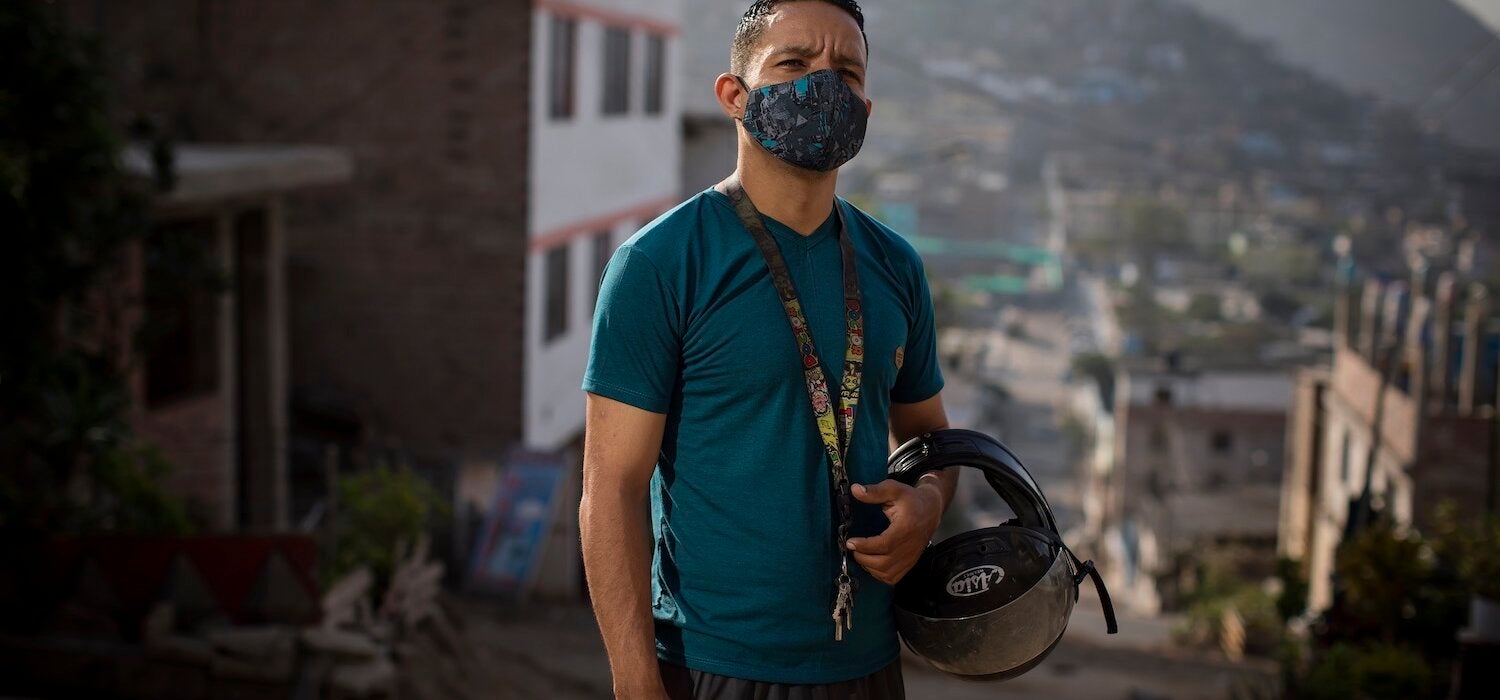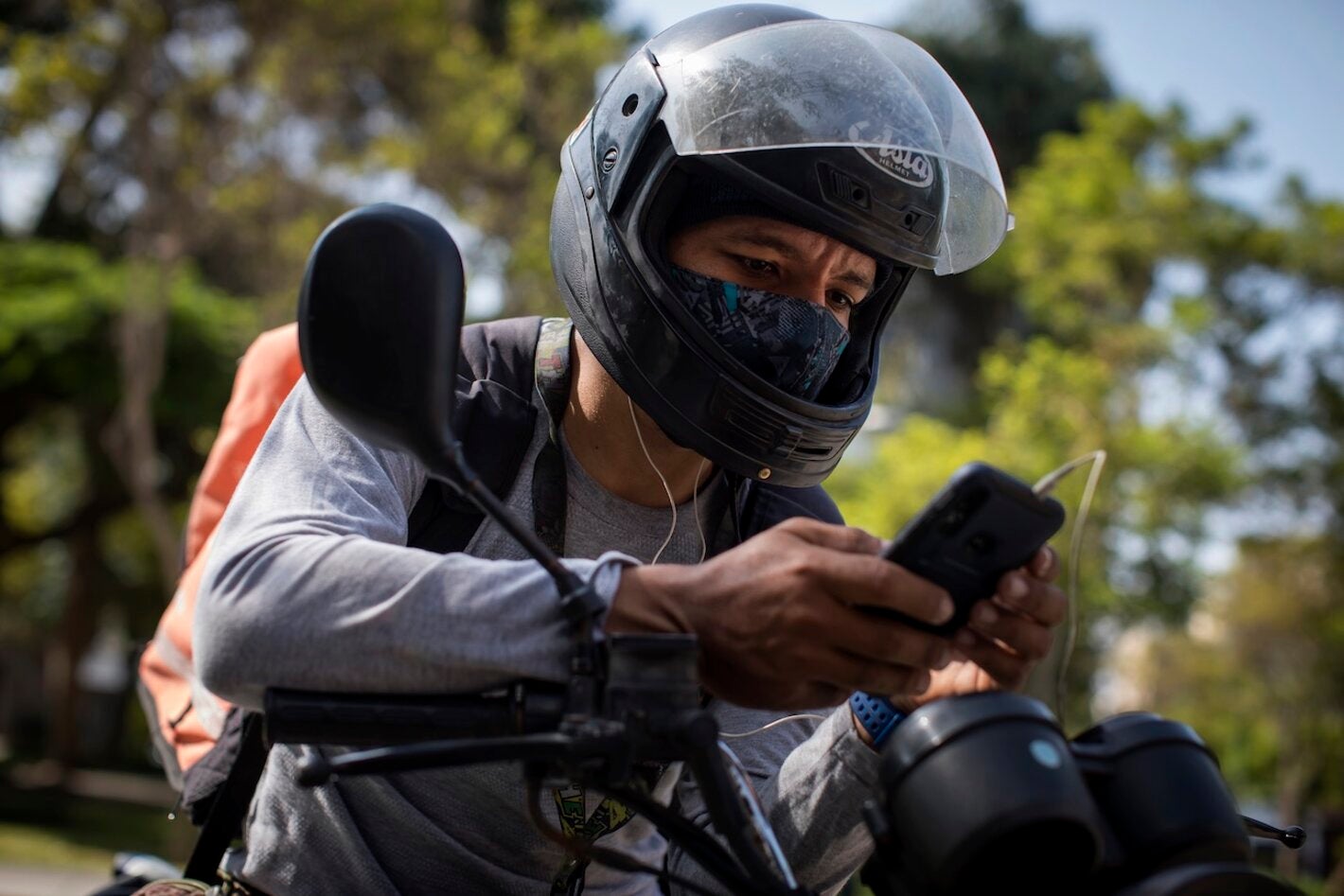With challenges finding jobs and limited access to health services, migrants tend to pay a high price for braving the COVID-19 crisis far from their home country. The situation of many Venezuelans living in Peru is an example of what’s going on all over the continent.
Lima, Peru July 27, 2021 — Erik Karim (34) has found himself between a rock and a hard place, forced to choose between no work or too much work. This is the situation that he and many of his fellow countrymen are faced with during the COVID-19 pandemic, as Peru now has the second highest population of Venezuelan migrants in Latin America (more than 1,040,000).
Erik has done everything he can to survive. From one moment to the next, he had to sell his car, leave his home and job as a professional firefighter, and temporarily leave his family behind. After a five-day trip over land from his native Tucaní, in the state of Mérida, he arrived in Lima. “My wife and I decided that I should come because eventually there would be no way for us to get out,” he recalls.
Being a migrant during the pandemic: a challenging reality
The humanitarian crisis in Venezuela has driven millions of Venezuelans to seek refuge in other countries in the region. Desperate for work, they have had to accept adverse working conditions without a social safety network and, sometimes, without decent pay. “I normally have to work 12-13 hours per day,” says Erik, who in the morning does gigs through delivery apps and in the evening puts in a shift at a pizzeria. At dawn, before leaving his home in the district of Villa María del Triunfo, he spends a few hours with his wife Rosani (38) and daughter Angelly (15). When he comes home already tired from his marathon workday, he spends trying to build a family business crafting woven sandals.
Erik earns around 1,500 soles (about US$ 410) a month working as a deliveryman, a little more than what the almost 46,000 delivery workers in Lima earn on average. The pandemic has created a market opportunity that fits the migrants’ needs. As estimates based on data from the Permanent Employment Survey show, work in the sector increased by 98% in less than a year.
Like many of his colleagues, Erik must be efficient and take no breaks. The key is to keep the app open and accept orders, rain or shine. It’s the only way to stay competitive, get more orders, and receive $/.60 per kilometer traveled. But that pace can be suffocating, which is why he prefers to devote more time to his job at the pizzeria. However, even with two jobs he isn’t earning enough. His wife Rosani works at a nursing home, where she makes great sacrifices, often staying there four or five days in a row. There’s no other way for the family to cover the rent for their small apartment on the south side of the city.
In March of last year, during a visit to Venezuela to see his parents, Erik contracted COVID-19. Barely three days after his arrival, the pandemic hit, and the border was closed. “I had to endure the lockdown over there,” he recalls. Recovered and with no savings, he returned to Peru in October 2020. He didn’t want to expose himself working as a deliveryman anymore but had no other choice. In December he managed to reactivate his account on one of the apps while also working at the pizzeria.
However, the fear of getting sick again never leaves him. “You always have that fear of contact with other people, but all you can do is be careful,” observes Erik. His only protection is a mask, a little alcohol, and his faith that everything will be all right. However, the virus remains an ever-present threat: monitoring campaigns conducted by the Ministry of Health and some Lima districts showed that some 30%-40% of delivery workers were infected.
Due to his status as foreign citizen, Erik does not have coverage under the Comprehensive Health Insurance (SIS) system. In theory, his Temporary Residence Permit gives him access to basic rights, but he has not managed to complete the process. This places him among the 91.5% of Venezuelan migrants without health insurance . For Venezuelans with irregular status, the outlook is even less encouraging. A study by the Center for Global Development and Refugees International notes that these migrants are excluded from the health system. Even those with regularized status may encounter problems accessing primary care due to “fear of threats from the authorities and lack of awareness among hospital staff,” according to the report.
“I would like to get coverage under SIS,” says Erik, alarmed by the second wave of infections. Although he initially thought young people weren’t at risk from COVID-19, now, he’s not so sure. Although the pandemic and work challenges are burdensome, he knows that the situation could be worse. “At least I have work”, he says, taking heart. And he’s not wrong: according to the Ombudsman’s Office, 89% of resident Venezuelans lost their job as a direct result of the pandemic. The 12% drop in Peru’s economic growth in 2020 ended up hitting the most vulnerable populations the hardest.
“If the pandemic doesn’t affect your health, it hits you financially and psychologically,” comments Erik. Now on his motorbike again, he prefers to focus on the next order and not dwell on the economy or lack of work in the formal sector. He zooms in and out of traffic down an avenue, turns onto another street, and pauses to deliver a pizza still hot from the oven. Despite everything, he feels fortunate. He has work, his family is together, and he survived the coronavirus. Perhaps one day he can make his dream of returning to Tucaní come true.




